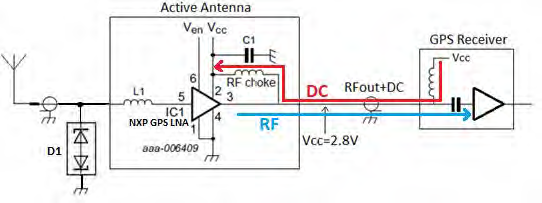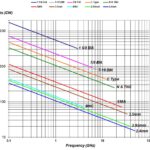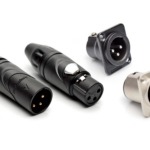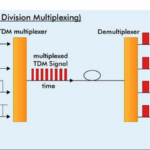Using one wire in two very different roles is widely done, requiring some simple circuity and basic components.
Providing DC power to an antenna amplifier via an RF coaxial cable
In most applications where the antenna is located at a distance from the radio receiver front end, it is desirable or necessary to add a preamplifier at the antenna element itself instead of feeding the received signal directly to the receiver. The preamplifier boosts the antenna-signal magnitude (usually in the millivolt or microvolt range) before sending it through the coaxial cable to the receiver itself. This low-noise amplifier (LNA) must increase that strength while adding as little of its own noise as possible, so the signal-to-noise ratio (SNR) is not degraded; typical LNAs have a noise figure of only a few decibels (dB) or less.
There are two major reasons for wanting to pre-amplify the signal at the antenna element rather than at the radio receiver front end:
- there is some unavoidable loss of signal strength in the coaxial cable, typically several dB/100 feet depending on cable construction, deterioration, and operating frequency
- primarily due to thermal effects, the cable also adds some noise as well, typically in the range of five to ten dB.
Combining these two effects is a reduction in the received signal SNR at the radio receiver compared to its value at the antenna. This degradation makes signal recovery more difficult, resulting in poor demodulated signal quality for analog signals and increased error rates for digital. By putting an LNA at the antenna element before it goes onto the coaxial cable, the link budget can get “ahead” of the degradation; the noise added by the LNA is usually less of a problem than the noise added by the cable and the loss in the cable.
Using the coaxial cable carrying amplified RF from the antenna to also provide DC power to the LNA (sometimes called a low noise block or LNB) is not just for advanced applications such as large parabolic (dish) antennas used for space-vehicle links. It is standard in consumer satellite-dish applications for home TV (such as the DISH Network in the US) or even Internet access via VSAT (very small aperture terminal) antennas with a diameter of under 3 meters and are mounted on rooftops or sides of houses (Figure 1).

It is also used to power the LNA located in GNSS (Global Navigation Satellite System) antennas (GNSS includes US GPS, European Galileo, and Chinese BeiDou systems) which operate in the 1560 – 1610 MHz range. These are often situated within a “shark fin” antenna on a car or boat.
As with microphone phantom power, the power requirements of the LNA are modest: 3 to 5 V DC, and under 100 mA; some newer LNAs require under 10 mA – and lower current results in lower IR drop and thus less DC-voltage loss along the coaxial cable.
A typical arrangement to send power to the LNA while sending amplified RF from the GPS-antenna element to the radio receiver uses the NXP BGU7004 (or similar) BGU7008 LNA with a noise figure of under 1 dB (Figure 2).

Operation is simple and somewhat similar to the phantom microphone power example, except that the analog signal is not an audio baseband signal but instead is an RF signal at 1.6 GHz, and inductors (chokes) are used to block RF but pass DC. The DC power from the receiver for the LNA goes through an RF choke at each end to block RF from reaching the LNA; decoupling capacitor C1 provides extra filtering of the RF signal in the DC supply line. The LNA output is sent to the receiver along with the DC power going to the LNA, while the small capacitor in series with the receiver input blocks the DC current from reaching the receiver front end.
This circuit is simple, reliable, effective, and presents no start-up or initialization issues: it is genuinely plug-and-go. The final part of this article looks at using a headphone wire as an FM-radio antenna.
Related EE Word Content
- Triple-band GNSS low-profile helical antenna features small form factor
- Surface-mount antennas cover GPS high-precision, correction bands
- DLNA Approves HomePlug AV and HD-PLC Powerline Networking for Increased Digital Home Connectivity
- The complexity of wireless receiver testing
- Gadgets: Several Decisions To Be Made Before Selecting New Headphones
- Microphone Product Family Adds Calibrated System With Phantom-Powered Preamplifier
External References
- ProSoundWeb, “A Primer On Phantom Power For Condenser Microphones“
- SweetWater, “What is Phantom Power, and why do I need it?
- Electrical Engineering,” Can anyone explain Phantom Power and, specifically, how it’s used in satellite television systems?“
- Elliott Sound Products, “48V Phantom Feed Supply for Microphones“
- Instructables, “Make a Mobile Antenna to Listen to FM Radio Without Headphones“
- Learning Electronics, “Antenna Input & Audio Lineout Adaptor For Portable Radios“
- Skyworks Solutions, AN383, “Si47xx Antenna Schematic, Layout, and Design Guidelines“
- NXP Semiconductor, AN11420, “NXP GPS LNA – GPS LNA voltage supply via a coax cable
coming from the GPS receiver“ - Maxim/Analog Devices, Application Note 6166, “MAX20328 Adds FM Radio Antenna Path to Smartphones with USB Type-C Interface”





Leave a Reply
You must be logged in to post a comment.